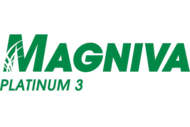High-moisture corn (HMC) offers many benefits. It has a high energy content, an earlier harvesting window, is highly digestible for livestock and doesn’t require drying. However, the nutritional characteristics and moisture content at harvest may vary. In addition, HMC carries a greater risk of fungal contamination and spoilage compared to other forages. To limit these drawbacks, good ensiling practices are mandatory — from ensuring the proper moisture at harvest to correct processing and storage.
Dry Matter
For most producers, the target moisture range is between 28 to 32%. Below 28% moisture, there is a greater risk for restricted fermentation and fungal development. Check the dry matter (DM) level and monitor for mold development on the pile face. At 32% moisture, and above, there will be more fermentation, and the digestibility of the starch is greater, which can lead to acidosis in cattle. For more information on acidosis in cattle, visit ruminantdigestivesystem.com.
Kernel Processing
Kernel processing influences the energy available in the rumen. Much of the advantage of processing corn silage is due to better kernel breakage and, therefore, more accessible starch for rumen microbes.
The higher the DM, the more important is to adequately process the grain. When adequately processed, 70% of all grains should be less than 0.19 inch, or 4.75 mm. In a quarter gallon, or 1 L, of grain, less than three or four kernels should be unbroken or half broken.
Starch digestibility
Corn is a seed and its contents are protected. HMC has high energy value due to its starch content, but the digestibility varies depending on the association or matrix that is formed with prolamin proteins. Flint and dent corns have more prolamin than floury or opaque corn per unit of starch. Besides the hybrid type, starch digestibility can be impacted (and improved) by moisture content, processing or particle size and length of the ensiling period.
Challenges
HMC is considered more prone to fungal growth. With the elevated risk of contamination, good management is critical — from the pest control in the field and proper ensiling practices, to the use of an inoculant able to help prevent mold development. HMC inoculants can quicken the speed of fermentation, reduce DM loss and nutrient losses, and improve aerobic stability. Inoculated HMC may also improve animal performance. Click here for more information on inoculant choices.
When fed in excess, HMC can lead to acidosis in ruminant animals. Watch for signs of clinical and Sub-Acute Ruminal Acidosis (SARA) and take steps to correct ration imbalances. For more information about acidosis in cattle, visit ruminantdigestivesystem.com.






